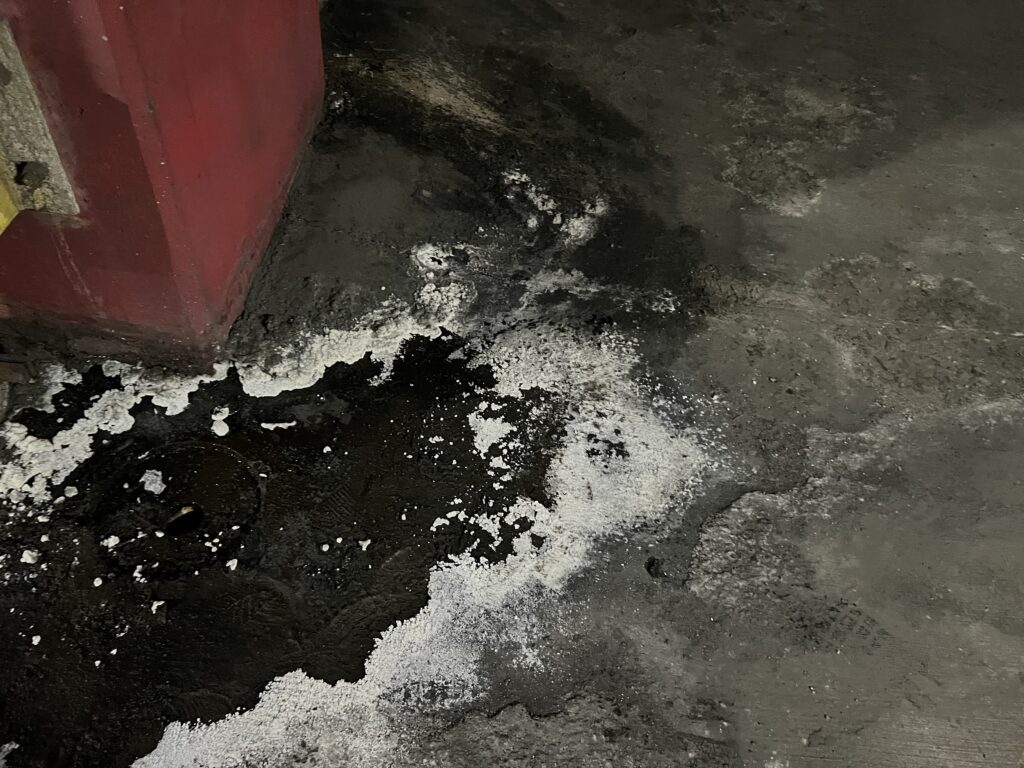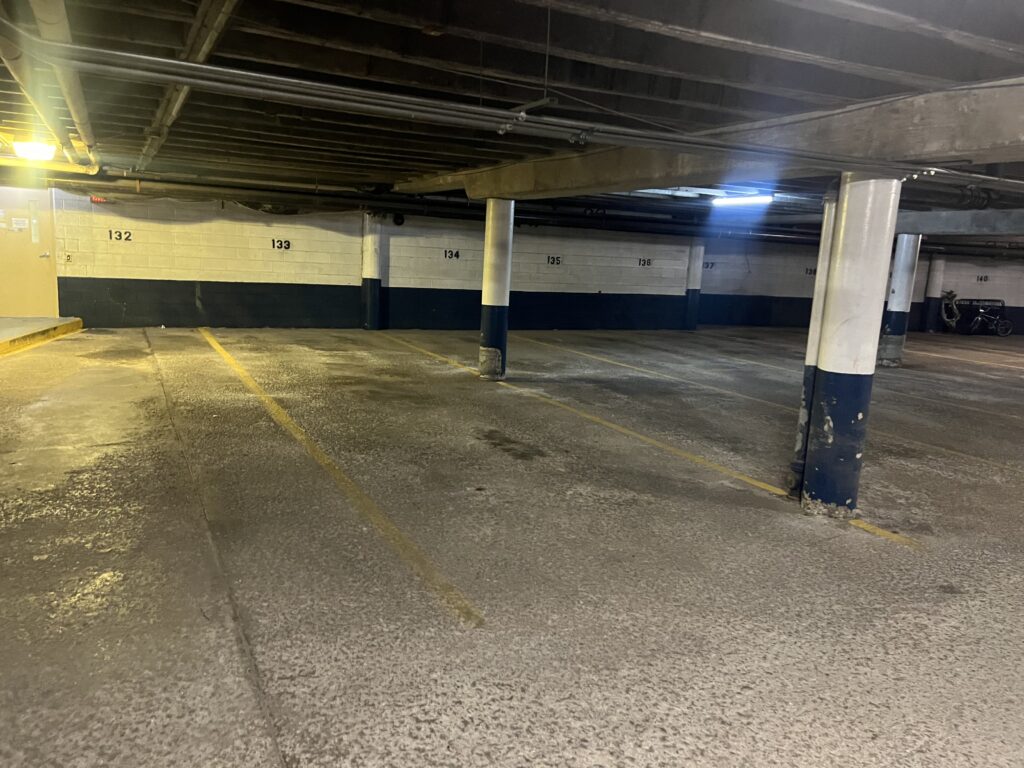
Parking garages, particularly in regions affected by harsh winter conditions, are subjected to the detrimental effects of salt and de-icing chemicals used to prevent slipping hazards. While salt provides immediate relief in terms of safety, its long-term consequences on the structural integrity of concrete and steel components are often overlooked. This article will explore the necessity and benefits of de-salting parking garages, discussing the damage caused by salt, the recommended practices for de-icing and de-salting, and the importance of maintaining a proactive maintenance schedule.
1. Introduction
With the arrival of winter, municipalities, property managers, and contractors face the annual challenge of managing ice and snow accumulation in parking garages. De-icing and de-salting are common practices used to mitigate the risk of slips and falls, ensuring safety for pedestrians and vehicles alike. However, while salt can provide immediate relief by preventing ice formation, its prolonged exposure can significantly affect the longevity and structural integrity of the parking garage.
As a major component in the winter maintenance process, de-salting becomes not just a seasonal concern, but a vital long-term maintenance strategy. Proper de-salting is necessary to protect parking structures from the corrosive effects of salt, preserve the safety and functionality of the garage, and minimize the need for costly repairs or reconstruction.
This article will discuss the harmful effects of salt on parking structures, the importance of timely de-salting, and provide recommendations from industry experts and manufacturers on the best practices for de-icing and de-salting parking garages.
2. The Impact of Salt on Parking Garages
Salt, specifically sodium chloride (NaCl), is one of the most commonly used de-icing agents in urban environments. Its primary function is to lower the freezing point of water, preventing ice formation and promoting the melting of existing ice and snow. However, over time, salt can have damaging effects on parking garages, especially when not properly cleaned or removed.
Corrosion of Concrete and Steel
Concrete, commonly used in parking garage construction, is particularly susceptible to salt damage. The chloride ions in salt can penetrate the concrete, where they react with the steel reinforcement bars (rebar) embedded within. This reaction results in the formation of rust on the steel, which, over time, weakens the concrete structure, leading to cracks, spalling, and general deterioration.
Additionally, when moisture from snow or ice comes into contact with salt, it can create a corrosive brine solution that accelerates the degradation process. Over time, this can reduce the load-bearing capacity of the parking garage and cause significant safety concerns.
Environmental Effects
Beyond its structural impact, the environmental effects of salt are also concerning. Runoff from de-icing chemicals can seep into the surrounding soil and water systems, introducing harmful levels of chloride into the environment. This can lead to vegetation damage, contamination of groundwater, and toxicity to aquatic life. As a result, responsible and sustainable de-salting practices are necessary to reduce environmental damage.
3. Why De-Salting is Necessary
While salt is effective in the short term for keeping surfaces safe, de-salting — or the removal of residual salt — is equally important for ensuring the long-term integrity and safety of parking garages. Without proper de-salting, parking structures may face a host of issues, including:
Preventing Structural Damage
Salt accumulation can lead to the corrosion of both the concrete and steel components within a parking garage. As the steel reinforcement rusts, it expands, which creates pressure within the concrete and leads to cracking, spalling, and surface erosion. Left untreated, this can compromise the structural stability of the garage, requiring costly repairs or even complete reconstruction.
Extending the Lifespan of the Parking Garage
Proper and timely de-salting reduces the frequency of repairs needed for a parking garage, thereby extending its operational lifespan. By minimizing salt exposure and ensuring that surfaces are clean, property managers can delay the need for significant maintenance, saving on long-term operational costs.
Enhancing Safety
The primary concern in winter maintenance is safety. Ice accumulation can create slip-and-fall hazards for pedestrians, leading to potential injuries. While salt can help to melt ice and prevent further accumulation, without de-salting, residual salt can leave behind slippery patches, posing a risk for future accidents. Moreover, salt can degrade the surface of the concrete, creating uneven patches that may cause tripping hazards.

4. Manufacturer Recommendations for De-Salting
Experts and manufacturers in the field of parking structure maintenance strongly advise against allowing salt to remain on the surfaces of parking garages for extended periods. Several key recommendations include:
Use of Non-Corrosive De-Icing Agents
Manufacturers like Cargill and K+S have developed alternative de-icing agents that are designed to be less corrosive than traditional sodium chloride. These alternatives, such as calcium magnesium acetate (CMA), potassium acetate, and other organic compounds, have minimal impact on both concrete and steel. When used appropriately, they reduce the corrosion rate and are also more environmentally friendly compared to traditional salts.
Timely Application and Removal
De-icing should be done promptly after snow or ice accumulation, and the salt or de-icing product should be removed before it can cause damage. It’s crucial to follow the recommended application rates provided by manufacturers to avoid excessive use of chemicals that may be difficult to remove. If excess salt is left on surfaces, it should be removed as soon as possible, especially before temperatures rise and salt begins to activate again.
Regular Cleaning and Maintenance
To minimize the long-term effects of salt exposure, parking garage operators should implement regular cleaning schedules. Pressure washing or mechanical sweeping can help remove accumulated salt from surfaces and reduce corrosion risks. Many manufacturers suggest applying a cleaning solution after the winter season to ensure that salt residues do not remain embedded in the concrete.
5. De-Salting Techniques and Best Practices
To ensure the effectiveness of de-salting, a combination of methods and best practices should be employed. These include:
Manual vs. Mechanical Methods
While manual de-salting (sweeping or brushing off the salt) can be effective in smaller parking garages, larger structures benefit from mechanical methods. Sweepers and automated equipment can cover large areas efficiently and help remove salt from surface cracks and joints.
Liquid vs. Solid Salts
Solid salts are commonly used in parking garages due to their easy application and affordability. However, liquid salts, such as brine solutions, offer several advantages. Liquid solutions can penetrate cracks and gaps more effectively, preventing ice from re-forming and ensuring better coverage. Moreover, brine tends to activate faster, requiring less overall application and reducing the amount of salt left behind.
Use of Eco-Friendly De-Icing Agents
In line with environmental concerns, many manufacturers now produce eco-friendly de-icing agents. These agents typically consist of biodegradable compounds that have little to no negative impact on the environment or surrounding ecosystems. These products, although often more expensive, provide long-term value by reducing the corrosive damage and environmental contamination associated with traditional salt.
6. Environmental and Cost Benefits
De-salting offers several environmental and financial advantages:
Reducing Environmental Impact
As discussed earlier, salt can negatively impact surrounding environments by leaching into the ground and water systems. Using eco-friendly de-icing products reduces this impact. Products like CMA and potassium acetate are biodegradable, reducing runoff toxicity and minimizing their impact on local flora and fauna.
Cost Savings Over Time
By reducing the need for constant repairs and increasing the lifespan of the parking structure, de-salting can lead to significant long-term cost savings. Preventing corrosion reduces the need for expensive resurfacing or structural repairs. Additionally, using non-corrosive de-icing agents reduces the need to replace parking surfaces more frequently.
7. Case Studies and Examples
Several urban parking garages across the U.S. have successfully implemented de-salting and de-icing programs. For example, New York City’s MTA parking garages have incorporated a combination of mechanical sweeping and eco-friendly de-icing agents to protect their parking structures. These measures have led to a reduction in corrosion rates and extended the operational lifespan of the garages.
Similarly, parking garages in Chicago have adopted non-chloride de-icing products, which have proven to be effective in preventing ice buildup while also reducing long-term maintenance costs.

8. Conclusion
De-salting is an essential aspect of parking garage maintenance, particularly in climates affected by snow and ice. While salt is an effective short-term solution for ice and snow control, its long-term impact on concrete, steel, and the environment cannot be ignored. By following manufacturer recommendations and employing timely de-salting practices, parking garages can avoid costly repairs, enhance safety, and preserve the longevity of their structures.
Property managers, municipalities, and contractors should take a proactive approach to de-salting, using eco-friendly products and best practices to protect both the infrastructure and the environment. By doing so, they ensure the continued safety and functionality of parking garages, ultimately saving time and money in the long run.
